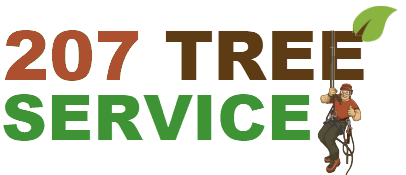Aside from being a beautiful addition, trees have many advantages in the landscape. To name a few benefits trees increase property value, provide food, offer shade, allow entertainment and leisure, and when properly maintained and planned, they even can contribute to the HVAC system efficiency. On the downside, there are a few circumstances that can warrant a tree to be hazardous and they should be removed before they cause property damage or injury. Today, we at a TREEGUY.com would like to share some of the signs the tree is hazardous.
Recognizing Risks of Hazardous Trees
Tree Cankers. A canker is a tree that has indented bark, or the bark is completely gone. Illnesses or injuries commonly cause trees to develop cankers. Where one or two cankers may not be a problem, a tree with multiple cankers can be an issue.
Cracks in Tree Trunk. A deep split through the bark is a crack, as the name suggests. A dying tree will commonly manifest cracks. Removing a tree is vital before severe consequences occur. The tree can be usually be spared, however, if the crack is minor and treatment is caught early enough before it extends through the bark. Unfortunately, a crack extending through the stem indicates the presence of a more serious problem. The tree is likely to have health problems and is better off removed if it often sustains cracks or branches break off.
Dead Wood. Wood looks and feels brittle, unbendable, and dry anywhere on the trunk, branches, or the stems should be immediately removed.
Tree Decay. Decay is spread internally and spreads outwardly. If a tree is displaying signs of decay, it has been failing for some time and any holes, or the wood feels soft and crumbly is making it weak. Also, decay will often correspond with mushroom and other fungal activity.
Tree Root Problems. Root problems experienced by trees are not anchored to the ground securely and are extremely hazardous. The poor roots will make the tree fall easily or blow over that causes property damage or personal injury. Any roots exposed above-ground that appear dead, severed, or unhealthy are a hazard.
Tree Posture. The tree’s posture can reflect its condition and poor posture suggest an issue.
Weak Tree Branch Unions. When branches are trying to grow too close together or leaving one or both branches growing insufficiently due to lack of nutrients, the branches are left weakened. The tree may be past rescue after prolonged weakness however, if caught early enough, some pruning, and trimming may save the tree.
Tree Inspection Tips
1) Learn about the different species of trees in your landscape. For example, some species may be attracting pests that can make them susceptible to weaknesses. Knowing the ideal climates is essential as well as knowing their watering, mulching, and even feeding and other treatment needs. Being familiar with your trees can prepare you for spotting hazards.
2) Find the age and the average size of your trees. Trees can be affected by stressful circumstances. If trees are stressed from their surroundings, they will weaken, decay, and become a hazardous tree. Look for early signs of stress and do what you can to alleviate it.
3) Check on condition of trees. Visual symptoms often appear when a tree’s health is poor. When you evaluate the health and condition of your trees, look for dead twigs, dead branches, and small or off-colored leaves. Unless they are dormant for winter, healthy trees will have lush, green leaves and always strong sturdy branches.
Emergency Tree Removal & More in Gorham, Lewiston, Brunswick, Saco, Cape Elizabeth & Greater Portland, Maine
If you suspect any of your trees are hazardous and need to be removed, or can be saved with pruning or trimming, call a TREEGUY.com today and let our experts determine your tree’s condition and the best course of action!




